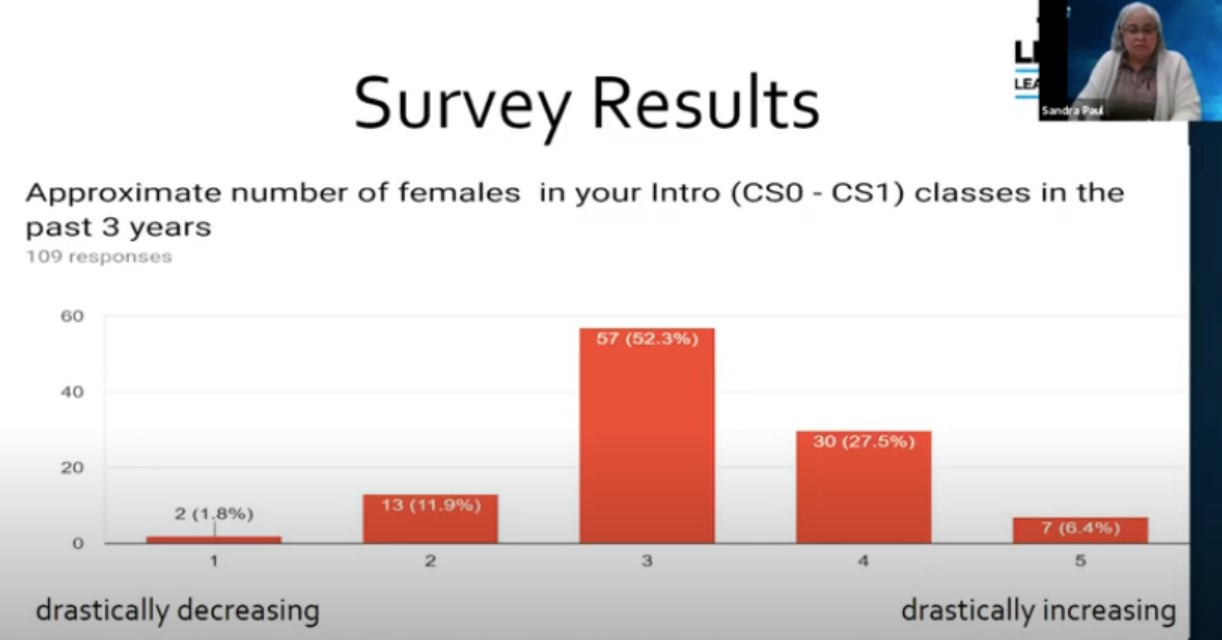How to Support Diversity in Technology
Diversity in technology requires intentional and proactive effort

When it comes to diversity, “It’s more than just hashtags,” said Adam Phyall III, Director of Technology and Media Services for Newton County School System in Covington, Georgia. “When you start talking about diversity, whether it’s in technology or education, what happens when the hashtag is over and it’s no longer trending on social media, what are you still doing?”
Best practices, advice, and resources to address diversity in technology and education was the focus of “Supporting Diversity in Technology,” a presentation during Tech & Learning’s recent Virtual Leadership Summit, which provided an environment in which district leaders could share their successes and challenges in facilitated small group discussions.
Watch the full session
Key Takeaways
Make yourself uncomfortable. “When we’re talking about diversity, equity, and inclusion, you have to be very intentional about this work,” Phyall said. “If you don’t get uncomfortable at any point in this process, then you’re not doing the work the right way because ultimately any time you’re dealing with this conversation, it’s more than curriculum. When you’re talking about equity, diversity, and inclusion, that’s going to change you at the core of your being. After you walk out of work, you have to take this home with you. You have to second guess your preconceived notions about how you interact with individuals.”
Authentic relationships. “When you talk about race, color, or sexual orientation, do you have individuals outside of your work space that you have those relationships with?” asked Phyall. “Are you building your skill set and knowledge?” Embrace your ignorance because it says that you have more things to learn. Then you can address it and inform yourself by proactively building new relationships or attending events to broaden your horizons. Take advantage of those opportunities to get uncomfortable so you can grow.
Equity beyond devices. The whole idea behind digital equity and supporting diversity is ensuring that not only everyone has a device, but it fulfills the needs of the student, teacher, or even the community, said Sandra Paul, Director of IT for the Township of Union Public Schools, a particularly diverse district in New Jersey. “The device alone does not answer the question of digital equity,” said Paul. “You have to be intentional about what you’re doing--just because you’re 1:1, it doesn’t work that way. Digital equity encompasses so much more than that.”
Individual needs. “We can tear down the barriers, but we want to make sure that individuals have the tools and resources needed for them to achieve what they need to achieve,” said Phyall. For example, does a student with special needs require a tablet instead of a Chromebook? “Equity is providing what that student needs, when they need it,” he said. To fill equity gaps, know your students and their needs.
Tools and ideas to transform education. Sign up below.
Staff access. Although the focus is on providing access and devices for students, many professional staff also lack. For her district, Paul had to scramble to provide devices and hotspots for her teachers and staff. “Sometimes, you don’t recognize the inequity from that point of view, but it’s real,” she said.
Everyone has to be involved. In addition to minority groups, it’s important to encourage women to get into technology, said Paul. “There is a deficit of women in technology and engineering fields,” she said. It is the responsibility of white and male professionals to notice that lack of diversity because they are the ones in position who have the power to make the change, said Phyall. “You have to have allies in this work,” he said. “You can’t ask the person who is suffering from an illness to come up with their own cure.” The structures in place need to be re-examined and changed.
The leadership pipeline is dry. Even though there has been an increase in women and people of color in tech fields, more work needs to be done to get them into the proper tracks to become tech leaders. The glass ceiling needs to be eliminated, and there needs to be more diverse voices in the room, said Phyall. With different perspectives available, more solutions can be found. “Our strength is in our diversity,” said Phyall.
Opportunity is knocking. With the pandemic and all the remote work and learning, the need for tech is greater than ever before. The jobs are out there but the personnel is currently lacking, which is why it’s important to encourage diverse groups to get involved. “If we don’t step into and prepare our students for this Information Age we’re presently in, we’re not going to have enough people to fulfill those positions,” said Paul.

Trending in the wrong direction. Paul shared statistics showing that the number of females and students of color taking computer science classes in her district has declined over the past three years. This trend is prevalent across the state and nation as well, she said.
Identifying and overcoming barriers. Be realistic about barriers, said Phyall. “If you see a big freaking hole while you’re walking, and you want to get over it, you have to run,” he said. “You can’t just say, ‘There’s a hole there.’ You have to identify the obstacle so you can put a solution in place.”
Girl power. Paul identified organizations and events dedicated to supporting and involving girls in technology, including National Center for Women and Information Technology, Grace Hopper Conference, IBM-EXITE, Cisco Girl’s Power Tech Day, and Microsoft DigiGirlz Day. Paul also invites female engineers and IT professionals to speak to her students. In his district, Phyall welcomes Black Girls Code and Girls Who Code, and has organized special events for girls to explore coding.
Ray Bendici is the Managing Editor of Tech & Learning and Tech & Learning University. He is an award-winning journalist/editor, with more than 20 years of experience, including a specific focus on education.
